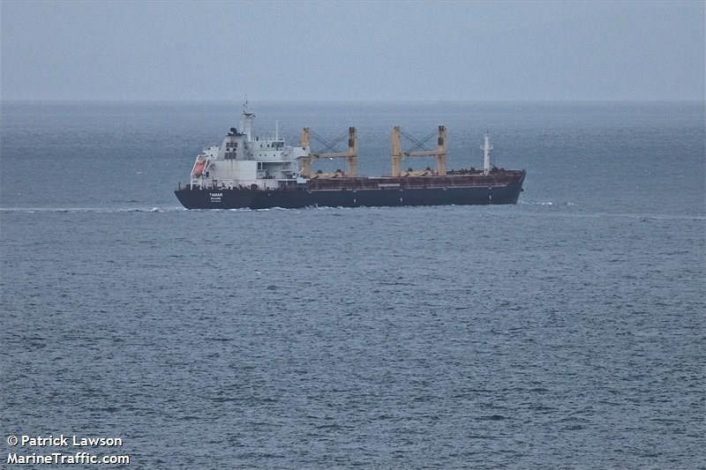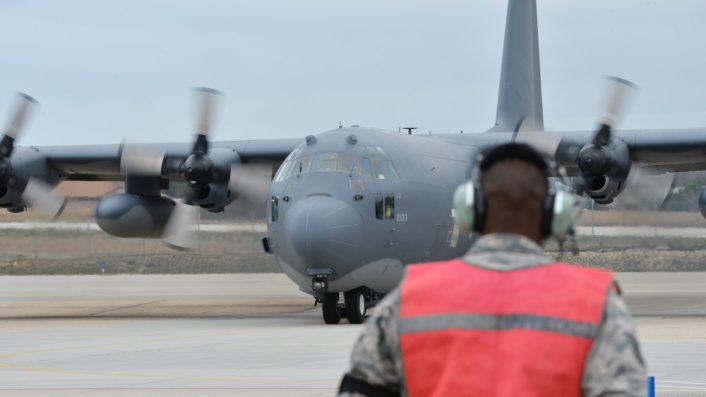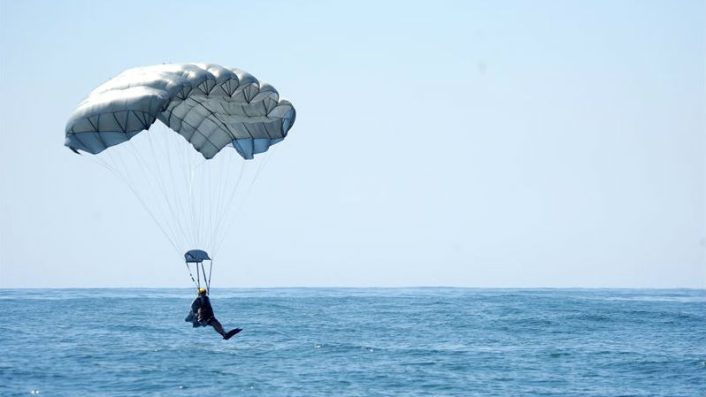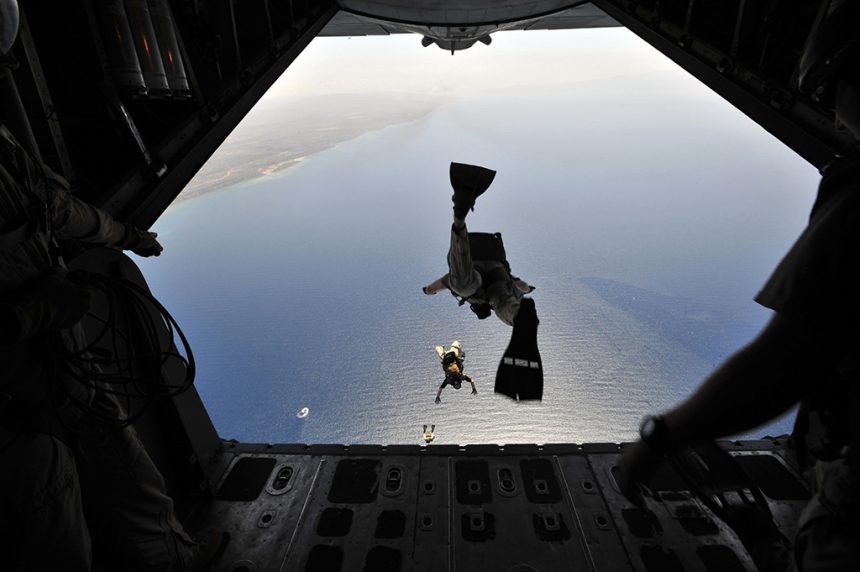In a Rare Use of Capabilities Elite USAF Rescue Team Jumps to Aid Burned Sailors.
In one of the most dramatic operational scenarios possible, seven elite New York Air National Guard Pararescue operators have executed a daring nighttime, open ocean parachute jump to board a burning ship at sea and rescue its crew.
The drama unfolded 1,200 miles off the east coast of the United States in the central Atlantic Ocean. At approximately 0700 hours local on Monday morning an explosion and fire ripped through the bulk cargo-carrying vessel Tamar. The Captain issued a distress call immediately. The vessel was too far out to sea for Coast Guard assets to effect rescue so the mission was handed over to the New York Air National Guard’s 106th Rescue Wing with the Canadian and Portuguese coast guards each providing support to the rescue.

The New York Air National Guard launched a four-engine turboprop HC-130 Hercules long-range search and rescue aircraft from the 102nd Rescue Squadron. The specially modified aircraft was carrying eight aircrew plus the Pararescue team and support personnel from the 106th Rescue Wing, based at Gabreski Air National Guard Base in Westhampton Beach, New York.
After the long flight to the objective over the open Atlantic the Pararescue team deployed a rigid inflatable boat by parachute to the ocean surface. The rescue team then parachuted into the sea around sunset. Pararescuemen swam to their rigid inflatable boat and immediately sailed to the nearby Tamar for boarding.

The first group of Pararescue operators landed in the ocean at 1950 Hr.s Eastern Time zone, just after sunset. By 2000 Hr.s ETZ all seven Pararescuemen had boarded the Tamar and were administering medical aid to the injured crewmen onboard, according to 106th Rescue Wing operations officials.
The Portuguese Air Force are planning to winch-hoist the survivors up to a rescue helicopter for transport to a hospital in Ponta Delagada, Azores once the Tamar is within range, according to 106th Rescue Wing operations. Unfortunately reports indicate two victims of the explosion have already died on board from their injuries. At least three more injured crewmembers are under the care of the Air Force Pararescue team.
The damaged Tamar is still nearly 30 hours sailing time away from Portuguese rescue helicopter range, according to sources at the 106th Rescue Wing.
“The 106th Rescue Wing is happy to support the Coast Guard in this rescue mission”, said Col. Nicholas Broccoli, the 106th Rescue Wing Vice Commander. “This is what we train for and our pararescuemen, pilots, crew members and the rest of our team are the best of the best.”

Top image credit: U.S. Air Force








